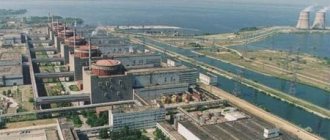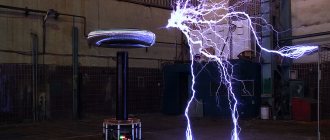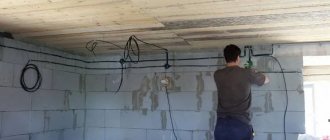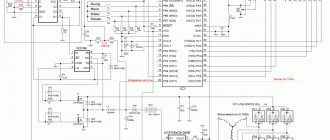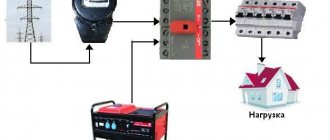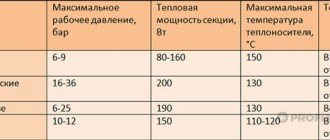The very idea of a device for obtaining free energy from the ether was invariably in great demand. Not only amateurs, but also many eminent scientists have seriously and not without success dealt with this issue. Nowadays, there are no fewer people who want to develop such an installation and make it themselves. Today you can try to obtain energy from the ether for your home using simple and affordable schemes.
general information
For many years, scientists have been searching for an alternative source of electrical energy that will make it possible to generate electricity from available and renewable resources. Tesla was interested in the possibility of extracting valuable resources from thin air in the 19th century. But if enthusiasts of past centuries did not have as many technologies and inventions at their disposal as modern researchers, today the possibilities for implementing the most complex and crazy ideas look quite real.
There are two methods to obtain alternative electricity from the atmosphere:
- thanks to wind generators;
- with the help of fields that permeate the atmosphere.
Science has proven that electrical potential can accumulate in air over a certain period of time.
Today, the atmosphere is so permeated with various waves, electrical appliances, as well as the natural field of the Earth that energy resources can be obtained from it without much effort or complex inventions. The classic way to extract energy from the air is a wind generator. Its task is to convert wind power into electricity, which is supplied for domestic needs.
Powerful wind turbines are actively used in leading countries of the world, including:
- Netherlands;
- Russian Federation;
- USA.
However, one wind turbine can only serve a few electrical appliances, so to power populated areas, factories or factories, it is necessary to install huge fields of such systems. In addition to significant advantages, this method also has disadvantages. One of them is the variability of the wind, which makes it impossible to predict the level of voltage and the accumulation of electrical potential.
Among the advantages of wind generators are::
- almost silent operation;
- no harmful emissions into the atmosphere.
Melon Loomis used atmospheric electricity to power long (400...600 miles) telegraph lines and for the first experiments in wireless communication, which, by the way, were quite successful. The Library of Congress preserves documents and evidence of telegraph communication between the hills of West Virginia at a distance of 18 miles (1868). Rice. 3. Hand drawn drawing by Malon Loomis showing his atmospheric electricity CW communication system. Loomis raised the antennas with kites from the tops of hills to a height of about 200 m. Even more interesting is his project for extracting atmospheric electricity with burners raised on kites, balloons or high masts (Fig. 4). Unfortunately, there are no comments for the picture. Fig.4. Loomis project with burners. At the turn of the 19th and 20th centuries, many researchers of atmospheric electricity appeared, proposing practical designs. These are Walter Pennock and MW Dewey in the USA, Andor Palencsar in Hungary, Rudolph in Germany. In 1898, Rudolph described an interesting design (Fig. 5) of an ellipse-shaped balloon with low wind resistance. A grid around the perimeter of the cylinder, metallized fabric on the cylinder and a system of tripwires serve to collect atmospheric electricity. Fig. 5. Rudolph's balloon.
Rice. 6. Illustration from Pennock's patent. Two elongated balloons 1 lift a metal network 40 that collects electricity. Flowing down the cables 6, it charges the battery of Leyden jars (capacitors) 50. The flaps 4 increase the lift, and the rudders 3 orient the balloons downwind, reducing drag. However, the leader was, of course, Dr. Herman Plauson, an Estonian by birth, but who lived and worked in Germany and Switzerland. In Finland, he experimented with balloons made from thin sheets of magnesium-aluminum alloy covered with very sharp, electrolytically produced needles. The needles could also contain radium to increase local ionization of the air. At that time, they still knew little about the radioactive danger, and, for example, watches with hands painted with radioactive compounds and glowing in the dark were widely used. The surface of the balloon was also painted with zinc amalgam, which in sunny weather provided additional current due to the photoelectric effect. Plowson received a power of 0.72 kW from one balloon and 3.4 kW from two raised to a height of only 300 m. He received US, UK and German patents for his devices in the 1920s. His book "Gewinnung und Verwertung der Atmosphärischen Elektrizität" (Production and Application of Atmospheric Electricity) contains a detailed description of the entire technology.
Fig.7. Plauson's projects. On the left is a free-standing insulated mast for collecting atmospheric electricity, in the center is a system of balloons, and on the lower right is a Plowson converter. Drawing from the magazine “Science and Invention” of 1922. Devices for collecting electricity from the atmosphere typically produce high voltage at very low current, so converting devices are needed to produce low voltage at high current. A transformer can do this, but it only works on alternating current, and the current from the atmosphere is direct. The method of converting high DC voltage into low AC voltage was proposed by Nikola Tesla in the 1890s. The idea boiled down to charging a capacitor and discharging it through a spark gap onto a coil with a large number of turns. The discharge was oscillatory in nature, and the coil could be the winding of a step-down transformer. This idea was developed by Plauson. In his patent, he begins by explaining how the voltage of a conventional electrostatic machine can be lowered (Figure 1 to Figure 8).
Rice. 8. Plauson converter. From the collectors (brushes) of the machine, the Leyden banks (capacitors) 5 and 6 present in it are charged. When a spark jumps between the balls of the spark gap 7 and 8, the circuit of the oscillatory circuit formed by the capacitors and coil 9 is closed. Then in coil 10 with a significantly smaller number of turns induced significant current at low voltage, and terminals 11 and 12 can be connected to an incandescent light bulb or an electric motor. This is what was done in the Plauson atmospheric electricity converter (Fig. 2 in Fig. 8). Arresters a1, b1, c1 serve for safety purposes. They short-circuit antenna 1 to the ground when there is a nearby lightning strike, for example. They do not participate in the normal operation of the converter, but the main spark gap 7 operates. It is curious that this figure shows a panicle antenna containing a bunch of sharp needles. Since then, on radio circuits, any antenna has been depicted exactly like this, completely forgetting about its original purpose! In conclusion, we note that the described grandiose devices have not received widespread practical use due to their bulkiness, impracticality, and most importantly, the instability of the output power, which entirely depends on the “electrical weather” in the atmosphere. It is also necessary to warn that experiments with atmospheric electricity are dangerous, especially during a thunderstorm and in pre-storm conditions. Strong electrification is also observed during snowstorms and dust storms. A direct lightning strike inevitably leads to the death of the installation, and possibly the people nearby. Currently, atmospheric electricity is being combated by carefully grounding high masts, antennas and other tall objects. They are often equipped with miniature “broom antennas” - tassels made of sharp wires that facilitate the drainage of charge from structural elements. The same tassels can be seen on the edges of airplane wings, so that their bodies do not accumulate an electrical charge during flight.
However, interest in atmospheric electricity research has increased and significant advances have been made in very recent years.
With the help of space photography, it was discovered, for example, that for every approximately 10 lightning strikes on the ground, there is one discharge upward into the ionosphere! They were given the romantic names of sprites, elves and jets. The physical models of these discharges are still the subject of scientific debate. Fig.9. Sprite photo (By: Pasko VP, Stenbaek-Nielsen HC // Geophys. Res. Lett. 2002. V.29 (A10); doi: 10.1029/2001GL014241). Projects for generating atmospheric electricity are emerging again, no longer using balloons, but using a powerful laser beam. A beam of blue, or even better, ultraviolet laser ionizes the air, forming a thin ionized and, therefore, conductive cord that extends into the sky to a considerable height. It is reported that in this way Japanese scientists managed to defuse a thundercloud, causing lightning to strike along the beam. The laser itself was reliably protected by a powerful metal grounded grid, which received the discharge. Of course, there were no people nearby, and the laser was aimed using a remote control system.
May - August 2008 V. T. Polyakov RA3AAE
Reality or myth
When it comes to getting energy out of thin air, most people think that this is downright nonsense.
However, it is quite possible to extract energy resources from literally nothing. Moreover, recently, educational articles, drawings and installation diagrams have appeared on thematic forums that make it possible to realize such a plan. The principle of operation of the system is explained by the fact that the air contains some tiny percentage of static electricity, you just need to learn how to accumulate it. The first experiments to create such an installation were carried out in the distant past. As a striking example, we can take the famous scientist Nikola Tesla, who repeatedly thought about affordable electricity from nothing.
The talented inventor devoted a lot of time to this topic, but due to the lack of opportunity to save all the experiments and research on video, most of the valuable discoveries remained a secret. Nevertheless, leading experts are trying to recreate his developments, following the found old records and testimonies of contemporaries. As a result of numerous experiments, scientists have built a machine that opens up the possibility of extracting electricity from the atmosphere, that is, from practically nothing.
Tesla proved that between the base and the raised plate of metal there is a certain electrical potential, which is static electricity. He also managed to determine that this resource can be accumulated.
The scientist then constructed a complex device capable of storing a small amount of electrical energy using only the potential that is in the air. By the way, the researcher determined that a small amount of electricity contained in the air appears when the atmosphere interacts with the sun's rays.
When considering modern inventions, you should pay attention to Stephen Mark's device. This talented inventor has released a toroidal generator that holds much more electricity and is superior to the simplest designs of the past.
The resulting electricity is quite enough to operate weak lighting fixtures, as well as some household devices. The generator operates without additional recharge for a long period of time.
Experiences of famous scientists
Nikola Tesla was one of the first to become interested in this problem. He planned to transfer the production of electricity from the air to an industrial basis. Most of Nikola Tesla's experiments were devoted to the free form of electricity. He believed solar energy to be the main reason for its appearance out of nowhere.
As a result of his study of free energy, Tesla created a device that would produce electrical energy directly from the earth and air. The transfer of the received energy over a distance was also provided. This invention was patented under the name of an apparatus using radiant energy.
Already in our time, inventor Stephen Mark created a device that produces electricity in sufficient quantities. It is called a toroidal generator, capable of efficiently powering various types of consumers, including incandescent lamps and even complex household appliances. This generator can operate for a long time and does not require any external recharge. Its main operating principle is resonant frequencies, magnetic vortices and current shocks in the metal.
Energy from the void
Science does not provide an intelligible definition of either field or energy. But she clearly formulates - energy does not come from nowhere and does not disappear anywhere. Trying to extract “energy from nothing,” we can only try to “fit in” to the process of its natural transformation from one type to another.
Energy is determined by useful work, and the field is determined by the spatial characteristics of the influence of its source. Both the static electric charge, the dynamic magnetic effect around a current-carrying conductor, and the heat of a heated body are considered fields.
Any field can perform useful work, and therefore transfer part of its energy. It is this property that prompts us to look for sources of free energy in various fields. It is believed that there is many times more such energy than in traditional sources mastered by mankind.
For example, we know how to use the gravitational energy of the huge Earth, but we do not know how to extract it from the attraction of a tiny stone. It's too small to make sense, but it's practically inexhaustible. If we come up with some way to extract it from a stone, we will get a new source of energy.
This is roughly what researchers and developers of all kinds and stripes are doing in an attempt to extract “energy from nothing.” The field from which various prospectors strive to learn how to extract an energy resource is what they call ether.
Current and classic developments
Modern discoveries and technological developments provide a wide field of activity in obtaining “cold electricity”. In addition to devices based on Tesla’s ideas, today such developments for obtaining “energy from emptiness” as:
- radiant electricity;
- use of powerful neodymium magnets;
- obtaining heat from mechanical heaters;
- transformation of earth energy and space radiation;
- vortex engines;
- thermal earth pumps;
- solar convectors;
- torsion generators.
All these methods have their adherents, but most of them are quite resource-intensive and costly. It is also important that they require deep specialized knowledge and ingenuity. All this makes such construction at home difficult. Energy from the ether can be obtained with your own hands using simple and affordable schemes. Their implementation will not require deep knowledge or high costs, but some adjustment, configuration and calculations will still be needed.
Not all such developments can be called extracting “etheric energy” . From the point of view of the absence of resource consumption for electricity generation, they can rightly be called extracting “energy from nothing.” The energy carriers of these systems are not destroyed during the transfer of energy—having given it away, they immediately accumulate it again. The system itself can generate electricity, if not forever, then at least for a very, very long time.
further reading
- James R. Waite, Some basic electromagnetic aspects of ULF field variations in the atmosphere
. Journal Pure and Applied Geophysics, Volume 114, Number 1 / January, 1976 Pages 15–28 Birkhäuser Basel ISSN 0033-4553 (Print) 1420-9136 (Online) DOI 10.1007 / BF00875488 - National Research Council (USA) and American Geophysical Union. (1986). Electrical environment of the Earth. Washington, DC: President's National Academy
- Solar dynamics and its impact on the heliosphere and the Earth D. N. Baker, International Space Science Institute
- Solar Variability, Weather and Climate National Research Council (USA). Geophysics Study Committee
- Cree, Charles (1911). "Atmospheric Electricity". In Chisholm, Hugh (ed.). Encyclopedia Britannica
.
2
(11th ed.). Cambridge University Press. pp. 860–870. It provides a detailed overview of the phenomena as they were understood in the early 20th century.
Galvanic couple principle
Our task is to find the potential difference, and this is easiest to do in the ground, since it consists of gases, water and minerals. Soil is a lot of solid particles, between which there are air bubbles and water molecules.
The elementary unit of soil is the micelle. This is a clay-humus complex with a potential difference. These particles accumulate charges according to the same principle as the entire planet, so electrochemical reactions constantly occur in the soil. And our task is to connect to this “network”.
You can use two electrodes made of different metals (copper and galvanized iron), that is, the principle will be used, as in a regular salt battery. In addition to the galvanic couple, we need an electrolyte (salt solution).
- We immerse the electrodes in the ground about half a meter, at a distance of 25 centimeters from each other.
- We install a piece of pipe of the required diameter around it to protect the rest of the soil from the electrolyte, since the salt level will not allow any plants to grow in the watering area.
- Prepare a saturated aqueous salt solution and pour it onto the ground between the electrodes.
- We connect a voltmeter to the terminals after 15 minutes and see that the device shows a voltage of 3V.
In total, you can connect a low-power LED lamp to the resulting power source. The voltmeter readings will vary depending on the density of the soil, its humidity and other indicators, so the results will be excellent in different areas.
Grounding method
If your private house is equipped with a normal grounding circuit, then know that part of the current you consume goes through it into the ground, especially if many electrical appliances are turned on at once.
As a result of this process, a potential difference of 15 to 20 Volts arises between the neutral wire of your network and the ground wire. By connecting a low voltage light bulb to them, you will make it glow
Interesting to know! This current will not be registered by the electric meter, since in fact it has already passed through it.
The circuit can be improved by installing a transformer and thereby equalizing the voltage. And by including a battery in the circuit, you can store energy, which will allow you to use the circuit when other appliances in the house are “silent”.
The option is working, but it is only suitable for private households, since apartments do not have proper grounding, and the use of water pipes for this is prohibited by law. Moreover, you cannot use ground and phase for connection, since grounding will be under a voltage of 220V - the price of such an experience may be someone’s life.
Wind generators
A popular and well-known source of energy obtained from wind is a wind generator. Such devices have long been used in many countries.
A single installation provides limited power supply needs. Therefore, it is necessary to add generators if it is necessary to provide energy to a large enterprise. In Europe, there are entire fields with wind turbines that do not harm the environment at all.
It is worth noting: the inability to calculate the voltage and current values in advance can be considered a disadvantage. Consequently, it is impossible to say how much electricity will accumulate, since the action of the wind is not always predictable
Lightning batteries
A device that accumulates potential using atmospheric discharges is called a lightning battery.
The device circuit includes only a metal antenna and grounding, without complex converting and accumulating components.
Potential appears between the parts of the device, which then accumulates. The impact of natural disasters is not subject to precise preliminary calculation and this value is also unpredictable.
It is important to know: this property is quite dangerous when implementing the circuit with your own hands, since the created circuit attracts lightning with voltages of up to 2000 Volts
How to get electricity from air at home
Nikola Tesla's experiments showed that you can generate electricity from the air with your own hands without much difficulty. Nowadays, when the atmosphere is permeated with various energy fields, this task has become easier. Everything that produces radiation (television and radio towers, power lines, etc.) creates energy fields.
The principle of generating electricity from the air is very simple: a metal plate rises above the ground, which plays the role of an antenna. Static electricity occurs between the ground and the plate, which accumulates over time. Electrical discharges occur at certain time intervals. In this way, atmospheric electricity is generated and then used.
Do-it-yourself atmospheric electricity generation scheme
This scheme is quite simple - only a metal antenna and ground are required for generation. The potential that is established between conductors accumulates over time, although it is impossible to calculate its strength. When a certain maximum potential value is reached, a current discharge occurs, similar to lightning.
How to build a free energy generator with your own hands?
Generators are created on the basis of the following components and accessories:
- Battery and resistor with a nominal value of 2.2 KOM. It is necessary to include it in the drawing.
- Ferrite ring of any magnetic conductivity.
- A capacitor with a capacity of 0.22 microfarads, designed for voltages up to 250 Volts.
- A thick copper busbar, whose diameter is about 2 millimeters. In addition, thin copper wires in enamel insulation with a diameter of 0.01 mm are used. Then radiant installations give results.
- A plastic or cardboard tube whose diameter is 1.5-2.5 centimeters.
- Any transistor with suitable parameters. It would be good if the basic package, in addition to the generator, included additional instructions. Otherwise, it is impossible to implement practical schemes for self-powered free energy generators.
Interesting. In the case of additional decoupling between the supply and high-voltage circuits, a special input filter is used. You don’t have to install such a device, but apply voltage directly.
For assembly, you can use a fiberglass board or another base with similar characteristics. The main thing is that the surface accommodates the radiator with all the necessary accessories. Both coils are wound on a plastic tube so that one is placed inside the other. A high-voltage winding, also located inside, is wound turn to turn. Sometimes this is also required by homemade pulsed fuel-free energy generators.
The shape of the generated pulses must be checked for functionality when the assembly is completed. To do this, take an oscilloscope, digital or electronic. When setting up, you should pay attention to only one important parameter - the presence of steep edges that characterize the generated sequence of rectangular contacts.
You may be interested in this Definition of resonance
Fuelless generators
Content
- 1. History
- 2 Description 2.1 Variations
- 2.2 Connections to biology
- 2.3 Close to space
- 2.4 Cosmic radiation
- 2.5 Thunderstorms and lightning
- 2.6 Corona discharges
- 2.7 Earth-Ionosphere cavity
- 2.8 Electrical system grounding
- 4.1 Quotes and notes
Generator circuit
The minimum power from any device can be obtained in several ways:
- Atmospheric condensate as a source. It can be used to create a transgenerator.
- Ferrimagnetic alloys.
- Warm water.
- Through magnets. They require minimal conditions.
But you need to learn how to control this phenomenon in order for the effect to be maximum.
Free energy diagram
Magnetic generator
The application of a magnetic field to an electric coil is the main effect that can be achieved by using such a device. The list of main components is as follows:
- Support coil to regulate electricity.
- Feed coil.
- Locking coil.
- Starting coil, also necessary for fuel-free appliances.
The circuit includes a control transistor along with a capacitor, diodes, a limiting resistor and a load.
Creating an alternating magnetic flux is the issue in which device owners have the most questions. It is recommended to mount two circuits that have permanent magnets. Then the lines of force are organized in the opposite direction.
Alternative Brand
The device is also known as TPU Air Electricity Generator, designed by Steven Mark. It allows you to obtain different amounts of electricity to power different purposes, and does this without the need for recharge from the external environment. But due to some features it still does not work. Such a problem will not hurt, however, to tell you about it.
The principle of operation is simple: a resonance of magnetic vortices and currents is created in the ring, which contributes to the appearance of current shocks in metal taps. To assemble such a toroidal generator, which allows you to get electricity from the air with your own hands, you need:
- The base, which can be a piece of plywood, similar to a ring, polyurethane or a piece of rubber; 2 collector coils (external and internal) and a control coil. A ring with an outer diameter of 230 millimeters and an inner diameter of 180 is best suited as a base.
- Wind the coil inside the commutator. The winding should be three-turn and made of stranded wire made of copper. Theoretically, to power the light bulb, one turn should be enough for you, as in the photographs. If it doesn't work, do it again.
- 4 control coils are needed. Each of them should be placed at right angles so as not to interfere with the magnetic field. The winding should be flat, and the gap between the turns should not exceed 15 millimeters. Less is also undesirable.
- To wind the control coils, use solid wire. It is necessary to make at least 21 turns.
- For the last coil, use insulated copper wire, which should be wound over the entire area. Basic construction has been completed.
Connect the leads by first installing a ten microfarad capacitor between ground and return ground. To power the circuit, use multivibrators and transistors. They will have to be selected experimentally due to the fact that different characteristics are needed for different designs.
Stephen Mark Generator
There is another interesting and working scheme - the TPU generator, which allows you to extract electricity from the atmosphere. It was invented by the famous researcher Stephen Mark.
Using this device, you can accumulate a certain electrical potential to service household appliances without using additional recharge. The technology was patented, resulting in hundreds of enthusiasts trying to replicate the experience at home. However, due to its specific features, it was not possible to release it to the masses.
The operation of the Steven Mark generator is carried out according to a simple principle: in the ring of the device, a resonance of currents and magnetic vortices are formed, which cause the appearance of current shocks. To create a toroidal generator you need to follow the following instructions:
- First of all, you should prepare the base of the device. You can use a ring-shaped piece of plywood, a piece of rubber or polyurethane. You also need to find two collector coils and control coils. Depending on the drawing, the dimensions of the structure may differ, but the optimal option is the following indicators: the outer diameter of the ring is 230 mm, the inner diameter is 180 mm. The width is 25 mm, the thickness is 5 mm.
- It is necessary to wind the internal collector coil using stranded copper wire. For better interaction, a three-turn winding is used, although experts are confident that one turn can power a light bulb.
- You should also prepare 4 control coils. When placing these elements, you must maintain a right angle, otherwise interference with the magnetic field may occur. The winding of these coils is flat, and the gap between the turns is no more than 15 mm.
- When winding control coils, it is customary to use single-core wires.
- To install the last coil, you should use insulated copper wire, which is wound over the entire base area of the structure.
After completing the above steps, all that remains is to connect the leads, first installing a 10 microfarad capacitor. The circuit is powered using high-speed transistors and multivibrators, which are selected taking into account the size, type of wires and other design features.
Where atmospheric electricity is already used
Nevertheless, there are examples of the use of devices that work according to the described principle - the Chizhevsky chandelier ionizer has been sold for decades and works successfully.
Another working scheme for generating electricity from air is the TPU generator by Stephen Mark. The device allows you to obtain electricity without external recharge. This scheme has been tested by many scientists, but has not yet found wide application due to its peculiarities. The principle of operation of this circuit is to create a resonance of currents and magnetic vortices, which contribute to the occurrence of current shocks.
Kapanadze's generator is currently being tested in Georgia. This energy source also works without external power and extracts electricity from the air without additional resources.
conclusions
New ways to obtain cheap energy raise concerns among many scientists due to interference in the processes of the atmosphere and ionosphere. Their influence on the emergence and course of life on Earth has been poorly studied, so the impact can have a detrimental effect on the state of the planet.
But personally, I believe that the technology of atmospheric electricity is being slowed down deliberately. Moreover, there is a fact of large-scale use of electricity from the air before 1917. In the video below you can see for yourself that electricity existed even in the 17th century.
Useful tips
When creating a device for extracting electricity from the air, it is necessary to remember a certain danger, which is associated with the risk of the appearance of the lightning principle
To avoid unforeseen consequences, it is important to observe the correct connection, polarity and other important points.
Work on manufacturing a device for obtaining affordable electricity does not require large financial costs or effort. All you need to do is pick a simple diagram and follow the step-by-step instructions exactly.
Of course, creating a super-powerful device with your own hands is problematic, since it requires more complex circuits and can cost a pretty penny. But as for the manufacture of simple mechanisms, this task can be accomplished at home.

